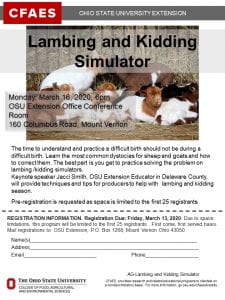 Enrollment in the 2018 Farm Bill programs (PLC, ARC-CO, and ARC-IC) ends on March 16th. If you do not enroll by this date you will default to the election you made in the previous Farm Bill and receive NO PAYMENTS for the 2019 program year. This same election holds true for 2020.
Enrollment in the 2018 Farm Bill programs (PLC, ARC-CO, and ARC-IC) ends on March 16th. If you do not enroll by this date you will default to the election you made in the previous Farm Bill and receive NO PAYMENTS for the 2019 program year. This same election holds true for 2020.
As a reminder, PLC is a price protection/income loss option that covers declines in crop prices and the ARC-CO program is an income support option based on county-level benchmark revenues and guarantees compared to actual revenues. For those with prevent planted acres, the ARC-IC program may be worth consideration. ARC-IC issues payments when individual crop revenue is less than the guarantee and uses individual yields, rather than the county yields.
Once an election is made, the choice carries through for 2019 and 2020. Annual changes can be made in 2021, 2022, and 2023 program years. If you have already made a program election and decide you want to make a change, you may do so until March 16th.
Information about the Farm Bill program options and the OSU Farm Bill Decision Tool are available at https://aede.osu.edu/research/osu-farm-management/2018-farm-bill/arcplc-decision-aid-tools. You may also consult your local FSA office or OSU Extension Educator for answers to your specific questions.
The Secretary of Agriculture has said there will not be an extension to the enrollment deadline. FSA offices are very busy processing enrollments and have a great deal of work to complete in less than one month. If you have not met with your FSA office staff to enroll in the Farm Bill program, please do so ASAP. Remember, the deadline is March 16th.








